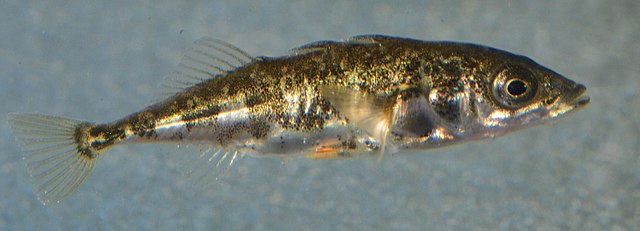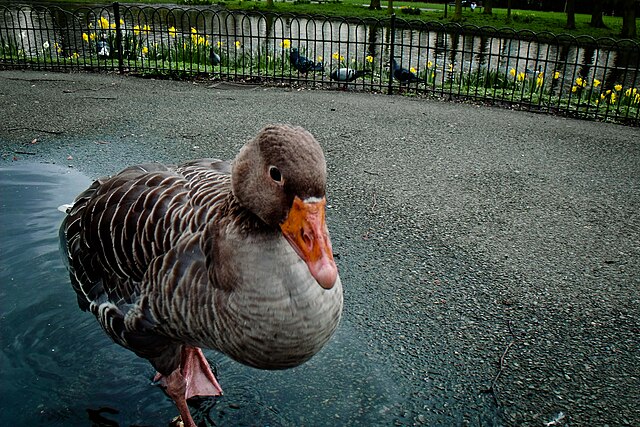"Fixed action pattern" is an ethological term describing an instinctive behavioral sequence that is highly stereotyped and species-characteristic. Fixed action patterns are said to be produced by the innate releasing mechanism, a "hard-wired" neural network, in response to a sign/key stimulus or releaser. Once released, a fixed action pattern runs to completion.
A 3-spined stickleback like those used in Tinbergen's experiments.
A greylag goose which participates in the described egg-retrieval behavior.
Brood parasites, such as the cuckoo, provide a supernormal stimulus to the parenting species, in this case a common reed warbler.
Ethology is a branch of zoology that studies the behaviour of non-human animals. It has its scientific roots in the work of Charles Darwin and of American and German ornithologists of the late 19th and early 20th century, including Charles O. Whitman, Oskar Heinroth, and Wallace Craig. The modern discipline of ethology is generally considered to have begun during the 1930s with the work of the Dutch biologist Nikolaas Tinbergen and the Austrian biologists Konrad Lorenz and Karl von Frisch, the three winners of the 1973 Nobel Prize in Physiology or Medicine. Ethology combines laboratory and field science, with a strong relation to neuroanatomy, ecology, and evolutionary biology.
Great crested grebes perform a complex synchronised courtship display.
Male impalas fighting during the rut
Charles Darwin (1809–1882) explored the expression of emotions in animals.
Kelp gull chicks peck at red spot on mother's beak to stimulate regurgitating reflex







